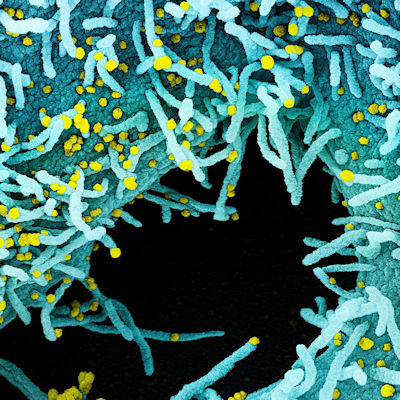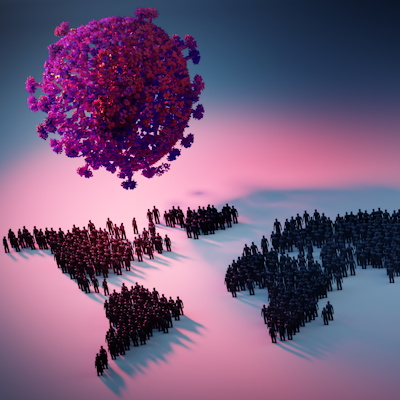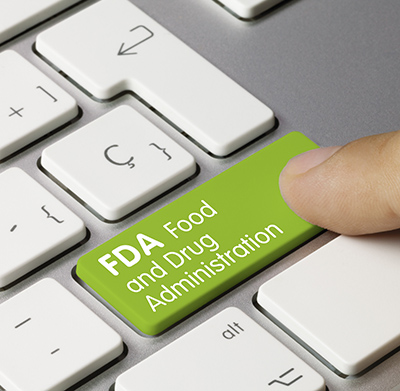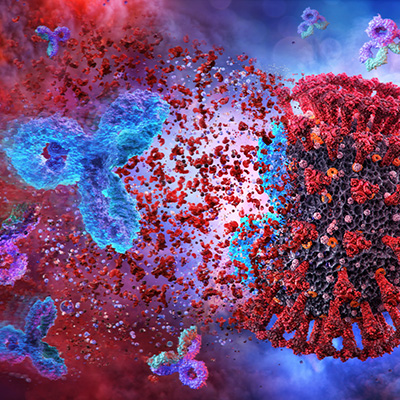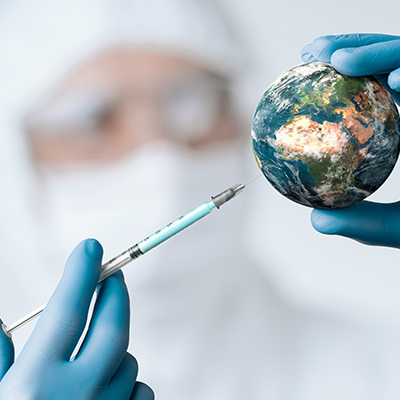July 16, 2020 -- Fears of continuing waves of infection with the SARS-CoV-2 virus have helped trigger an accelerated effort among drug developers to bring a coronavirus vaccine to market. But even after a vaccine is developed and approved, there are a host of other challenges that must be solved to make sure it is administered widely enough to protect society at large.
As countries and regions struggle to reopen their economies and get back to a somewhat normal way of life after initial quarantine and stay-at-home-orders, concerns about health will not ease unless there's a definitive way to protect the population from reinfection -- and a vaccine appears to be the only way society can be safeguarded.
Developing a COVID-19 vaccine that's safe and effective will enable countries to vaccinate a large enough percentage of their citizens to scale back the potential for another overwhelming epidemic. A successful vaccine will prevent people from getting sick, as well as lessen transmission of COVID-19.
No one is safe until....
Usually, it can take a few years to go through the vaccine development process. But due to the health and economic threat presented by COVID-19, governments, funding groups, and companies are rapidly accelerating their efforts.
Governments and philanthropies have given more than $4.4 billion to pharmaceutical corporations for research and development for COVID-19 vaccines, said Doctors without Borders in a statement. That total is probably close to $5 billion currently.
As part of a broader strategy to accelerate the development, manufacturing, and distribution of COVID-19 vaccines, therapeutics, and diagnostics, the U.S. Department of Health and Human Services established Operation Warp Speed (OWS), which aims to deliver 300 million doses of a safe, effective vaccine for COVID-19 by January 2021.
In one instance, Novavax received $1.6 billion through OWS to complete late-stage clinical development, including a pivotal phase III clinical trial; establish large-scale manufacturing; and deliver 100 million doses of NVX‑CoV2373, Novavax's COVID-19 vaccine candidate, as early as late 2020. NVX‑CoV2373 consists of a stable prefusion protein made using the company's proprietary nanoparticle technology and includes Novavax's proprietary Matrix‑M adjuvant.
As of mid-July, Moderna is looking for about 30,000 volunteers for a phase III clinical trial for its vaccine candidate messenger RNA (mRNA)-1273. Data published July 14 in the New England Journal of Medicine from an early-stage trial showed that mRNA-1273 stimulates an immune response. Still, it could be a few years before the vaccine is ready for human use.
More than 30 other potential COVID-19 vaccines have reached the human trial stage since the pandemic began, and like all other vaccines, they must progress through the same clinical trials and meet U.S. Food and Drug Administration (FDA) criteria. Assuming that trial participants will number in the thousands and include thorough protocols that track side effects, efficacy, and effectiveness, the public can be confident the vaccines are safe.
To reach as many people as possible, COVID-19 vaccines must be affordable and accessible. This is a particular concern for low- and middle-income countries. Toward this end, Doctors without Borders is demanding that drug companies make COVID-19 vaccines available at the cost of production.
To that end, a public health strategy should be in place to help guarantee accessibility and a balance in which the wealthier nations share their vaccine supply with lower-income countries. The European Union is creating a European vaccines strategy in which members pool funding, research, and manufacturing resources. Any resulting vaccines would be allocated to all members.
France, Germany, Italy and the Netherlands have created an "inclusive vaccine alliance" to pool vaccine development resources and secure vaccine supplies for Europe while allowing fair access to the vaccine for all countries.
Another effort is the COVID-19 Global Vaccine Access Facility (Covax) launched by Gavi, a public-private vaccine alliance. Focused on low- and middle-income countries, it allows nations to pool resources for research, production, and advanced purchase agreements, and each would get a share of vaccines.
Supply chains
While rapid arrival of a COVID-19 vaccine would be a tremendous public health victory, providing a secure vaccine supply to billions of people worldwide is not easy. There will be concerns over the availability of the chemical components used in the vaccines, notably as many must be imported, as well as the extent of processing capacity. Consideration should be given to developing models that could foretell possible failure points in the chains.
And what about plans for supplying syringes, needles, and peripherals? These usually are sourced from different suppliers but must be considered when planning supply chains. Transporting vaccines will require optimized logistics and transport of individual vaccine components needed for clinical trials and production. Even temperature control can be an issue.
Groups, including the Coalition for Epidemic Preparedness Innovations (CEPI), are funding increases in production capacity now to enable production flexibility once vaccines are ready for production. But vaccine producers must invest in new facilities flexible enough to produce different vaccines and meet differences in demand, especially as COVID-19 may come in waves.
An effective COVID-19 vaccine will enable citizens around the world to return to at least a near-normal way of life. Hopefully, this can result from current research and development efforts, the establishment of successful and extensive supply chains, and accessibility and affordability for all who must be vaccinated.
Copyright © 2020 scienceboard.net




